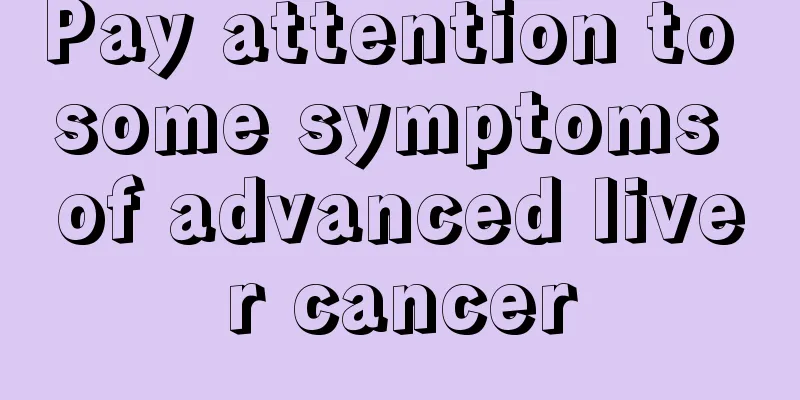What is urticaria

|
The human body has many problems, but most of them are caused by many reasons. Different types of diseases manifest themselves differently, but generally they can be manifested on the surface of the skin, including urticaria. There may still be many people who do not understand this disease or even do not know about it. So what is urticaria? Urticaria is commonly known as wheal. It is a localized edema reaction caused by dilation of small blood vessels and increased permeability in the skin and mucous membranes. It usually subsides within 2 to 24 hours, but new rashes may occur repeatedly. The course of the disease lasts from several days to several months. It is quite common in clinical practice. Cause: The cause of urticaria is very complicated, and about 3/4 of patients cannot find the cause, especially chronic urticaria. The common causes include: food and food additives; inhalants; infection; drugs; physical factors such as mechanical stimulation, cold and heat, sunlight, etc.; insect bites; mental factors and endocrine changes; genetic factors, etc. Clinical manifestations: The basic lesion is the appearance of wheals on the skin. The skin often itches first, followed by the appearance of wheals, which are bright red or pale, skin-colored. A few patients have edematous erythema. The size and shape of the wheals vary, and the onset time is uncertain. The wheals gradually spread and merge into sheets. Due to edema of the dermal papillae, the openings of the epidermal hair follicles can be seen sunken downward. The wheal lasts from several minutes to several hours, and in some cases it can last for several days before disappearing without leaving any trace. The rash occurs repeatedly in batches, mostly in the evening. Wheals are often generalized but may also be localized. Sometimes it is accompanied by angioedema, and occasionally bullae form on the surface of the wheal. Some patients may experience nausea, vomiting, headache, head swelling, abdominal pain, and diarrhea. Severe patients may also have systemic symptoms such as chest tightness, discomfort, pale complexion, accelerated heart rate, weak pulse, low blood pressure, and shortness of breath. A disease that is cured in a short period of time is called acute urticaria. If the urticaria recurs at least twice a week for more than 6 weeks, it is called chronic urticaria. In addition to the common urticaria mentioned above, there are also the following special types of urticaria. 1. Skin scratch urticaria/artificial urticaria: The patient's physiological response to weak external mechanical stimulation is enhanced, causing wheals on the skin. After scratching, or when wearing tight belts or garters, the patient will develop local wheals and itching. 2. Delayed skin scratches: Wheals and erythema appear 6 to 8 hours after skin scratches are stimulated, and the wheals last for 24 to 48 hours. There is more than one delayed skin lesion, and small segments or dots are formed along the scratch. The lesions are deeper or wider, and even expand to both sides to form lumps. Local fever and tenderness. 3. Delayed pressure urticaria: The rash occurs 4 to 6 hours after local skin pressure is applied and usually lasts 8 to 12 hours. Symptoms include localized, deep, painful swelling, which may be accompanied by chills, fever, headache, joint pain, malaise, and a mild increase in white blood cell count. Large local swelling resembles angioedema and is prone to occur on the palms, soles, and buttocks. There may be a 24-hour incubation period before the lesions occur. 4. Cholealkaloid urticaria: The rash is characterized by the occurrence of generalized small wheals of 1 to 3 mm in size except on the palms and soles, with obvious surroundings. Satellite wheals can sometimes be seen among them, or only tiny sparse wheals with or without red halos can be seen. Sometimes the only symptom is itching without wheals. The damage lasts from 30 to 90 minutes, or up to several hours. It mostly occurs during or shortly after exercise, accompanied by itching, tingling, burning, heat or skin irritation. It can also be triggered by heat or emotional tension. 5. Cold urticaria: can be divided into familial and acquired types. The former is relatively rare and is inherited in an autosomal dominant manner. A delayed reaction occurs half an hour to four hours after exposure to cold. The rash is a non-itchy wheal that may have a cyanotic center surrounded by a pale halo. The rash lasts for 24 to 48 hours and has a burning sensation, accompanied by systemic symptoms such as fever, joint pain, and increased white blood cell count. The latter is more common, and patients often experience it when the temperature drops suddenly or after contact with cold water. Within minutes, itchy edema and wheals occur locally, most often on the face and hands. In severe cases, other parts of the body may also be affected. Headache, flushing of the skin, low blood pressure, and even fainting may occur. 6. Solar urticaria: After the skin is exposed to sunlight for a few minutes, itching, erythema and wheals quickly appear locally. The wheal disappears after about 1 to several hours. The rash may be accompanied by chills, fatigue, fainting, and intestinal cramps, which disappear within a few hours. 7. Contact urticaria: It is characterized by the occurrence of wheals and erythema when the skin comes into contact with certain allergens. It can be divided into two categories: immune mechanism and non-immune mechanism. Non-immune disease is caused by the direct action of primary irritants on mast cells to release substances such as histamine. Almost all contacts will become ill without the need for substance sensitization. The immunity is a type I allergic reaction, and specific IgE antibodies can be detected. In addition, there are rarer types of urticaria such as heat urticaria, exercise urticaria, tremor urticaria, aquagenic urticaria, adrenergic urticaria, and electrical urticaria. |
<<: There are many small blisters on the palm
>>: What are some tips for preventing oil from foaming?
Recommend
When will the hot weather end
There are four seasons in a year, and each season...
Lower back pain after half body anesthesia
When people undergo surgery, they usually need an...
What to eat to prevent lung cancer growth
What should you eat to prevent lung cancer from g...
The difference between hair oil and conditioner
We usually use conditioner or hair oil when washi...
Can gastric cancer be diagnosed with CT scan?
Gastric cancer can be diagnosed with CT scans, wh...
Will nerve damage caused by anesthesia heal on its own?
Generally speaking, during surgery, in order to a...
What are the clinical manifestations of tracheal diverticulum
When there is a problem with the human trachea, i...
How to use vinegar to soak your feet correctly
Soaking feet in vinegar can effectively relieve p...
Why can't we eat crabs and persimmons
Persimmon is a nutritious fruit. Many people like...
What are the symptoms of tongue stiffness
The tongue is particularly important to the human...
Will plums make you fat?
Plums are a common fruit in our lives, mainly pro...
What are the methods for early diagnosis of lung cancer? 3 methods can be used to diagnose early lung cancer
Methods for diagnosing early lung cancer include ...
Hemiplegia rehabilitation method, defeating hemiplegia is not a dream
Any disease requires certain methods for treatmen...
Diet for men after prostate cancer surgery
When you are healthy, you will be energetic no ma...
Effective folk remedies for treating pancreatic cancer
Effective folk remedies for treating pancreatic c...









